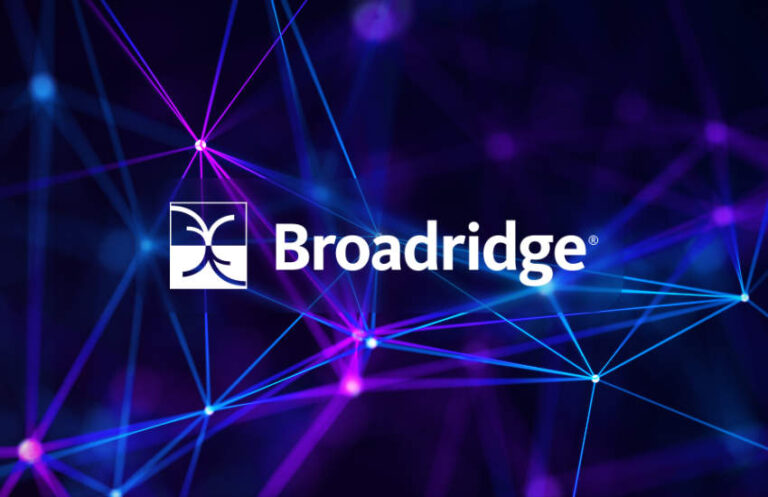
Source: www.ledgerinsights.com
In mid-2021, Broadridge launched its Distributed Ledger Repo (DLR) solution, quickly reaching $31 billion in average weekly volumes. That figure is now $50 billion a day, or $1 trillion a month. But the DLT platform is just getting started.
So far, UBS and Societe Generale are two banks that have confirmed they are active on the platform, and the number of participants is expected to reach double digits this year, with three currently onboarding.
A typical repo transaction involves one party borrowing cash by selling securities, often Treasury bills. There is an agreement to repurchase the securities at a slightly higher price in the near future. The net effect is a loan with Treasury bonds as collateral. DLR enables the settlement, execution, and settlement of repo transactions on a single ledger.
In some cases, the main goal is for a bank to ensure it has the right mix of collateral on its balance sheet to comply with regulations. Currently, most of the activity on the DLR platform involves intraday transactions between different entities within a banking group to ensure that the collateral is in the right place. But that is only the first step.
As a result of its support for internal transactions, the DLR is able to offer short-term financial returns to users. Broadridge’s Horacio Barakat believes it’s not enough for a DLT-based platform to promise future benefits once the network effects are activated. Instead, DLR provides a quick win within the company, and the benefits increase as the network expands and supports more external bilateral transactions.
This is a fairly common pattern for distributed ledger solutions. For example, HSBC initially used Baton Systems’ DLT FX solution for trillions of dollars in intra-group transactions before using it with Wells Fargo for bilateral FX transactions.
It is also comparatively easy to get other group companies to join the platform. But if they want to execute intraday repo transactions with external counterparties, then those organizations must be in the network. Hence the need to expand the network. Broadridge’s DLR is in the process of transitioning from that intra-company transaction phase to the external bilateral transaction phase and is currently onboarding three new customers. Hence, the confidence that it will achieve ten participants or more at the end of the year.
“Momentum and interest in the platform continues to grow,” Barakat said. “One of the reasons is the flexibility of the platform and the ability to use the platform for various use cases related to repo transactions.”
One of the main advantages of the DLR platform is the ability to execute intraday trades, especially useful as interest rates rise. But the settlement times are flexible and can be agreed between the counterparties. Other key benefits are shared workflow and resulting cost savings, as well as increased collateral mobility.
How DLR works
DLR uses smart contracts to “mutualize the workflow”. In other words, instead of actions taking place separately in each party’s internal systems, which may not coincide with each other, through the use of smart contracts they are synchronized. This is because repo transactions are dealt, executed, and settled on the shared ledger.
The underlying collateral is locked and tokenized, allowing ownership to be transferred via smart contracts. As one of the major technology players in the US fixed income market, Broadridge was able to leverage its existing connectivity with central securities depositories (CSDs) and custodian banks.
Settlement is done by triggering a payment at conventional payment lanes instead of cash in the ledger. The transaction is atomic, so payment and transfer of ownership are simultaneous, reducing counterparty risk. Broadridge is participating in some trials on digital money.
Through the use of smart contracts, DLR can provide considerable flexibility. It’s not just about the term of the repo, intraday or otherwise, but also about its compatibility with a variety of repo trade types, including central clearing.
It provides a library of smart contracts governing the agreement and workflow that platform users can edit or create their own. In fact, the solution is flexible enough that it has already been used for non-collateral cash transactions.
DLR uses the DAML smart contract language on the VMWare blockchain. So far, Broadridge hosts all the client nodes, as it provides other technology services to these clients. However, some customers are expected to host their own nodes.
Barakat said the solution has been benchmarked against the same criteria that Broadridge uses for other platforms with respect to security, safety and resiliency.
“We are very happy with our selection. We’ve shown (that) for our use case and the way we implement the technology, this is actually resilient. It is on an institutional scale. It has been in production for over a year and a half,” Barakat said.
Read More at www.ledgerinsights.com